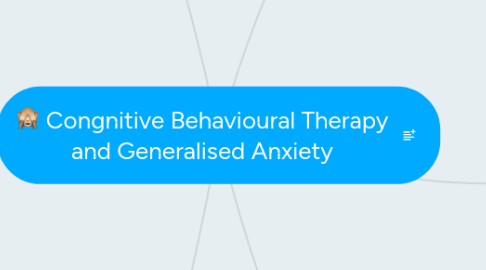
1. Learn to use helpful strategies
1.1. Problem-Solving
1.1.1. Worrying Versus Problem Solving
1.1.2. Preparing For Problem Solving
1.1.2.1. The Right Set-Up
1.1.2.2. Is There A Problem?
1.1.3. How To Solve Problems
1.1.3.1. Identify/Define Problem
1.1.3.2. Generate Possible Solutions
1.1.3.3. Evaluate Possible Solutions
1.1.3.4. Decide On A Plan
1.1.3.5. Implement Plan
1.1.3.6. Evaluate The Outcome
1.2. Relaxation
1.2.1. Breathing
1.2.1.1. Your Rate Of Breathing
1.2.1.2. Your Depth Of Breathing
1.2.1.2.1. Chest Breathing
1.2.1.2.2. Stomach Breathing
1.2.2. Calming Technique
1.2.2.1. Breathing Pattern
1.2.2.2. Breathing Timing
1.2.2.3. Breathing Practice
1.2.3. Muscle Tension
1.2.3.1. Muscle Tension Scan
1.2.4. Progressive Muscle Relaxation
1.2.4.1. General Procedure
1.2.4.2. Relaxation Sequence
1.2.5. Additional Points
1.3. Self-Management
1.3.1. Maintaining Gains
1.3.2. Setbacks
1.3.2.1. Reasons For Setbacks
1.3.2.2. Preventing Major Setbacks
1.3.2.2.1. Identify Early Warning Signs
1.3.2.2.2. Revise Skills
1.3.2.2.3. Social Support
1.3.3. Self-Management Plan
2. Deal with the specific worries you have
2.1. Challenging Worries
2.1.1. The Thinking-Feeling Connection
2.1.2. Your Worry Diary
2.1.2.1. About Your Worries
2.1.2.2. Challenge Your Worries
2.1.2.3. Balanced Thinking
2.1.2.4. Re-rate
2.2. Letting Go Of Worries
2.2.1. What Is "Letting Go"?
2.2.2. How To Let Go Of Worries
2.2.2.1. Be Aware
2.2.2.2. Don't Respond
2.2.2.3. Let Go
2.2.2.4. Be Present-Focussed
2.2.2.5. Deal With A Wandering Mind
2.3. Accepting Uncertainty
2.3.1. Intolerance Of Uncertainty
2.3.2. Challenging Intolerance Of Uncertanity
2.3.3. Accepting Uncertainty
2.3.3.1. Be Aware
2.3.3.2. Don't Respond
2.3.3.3. Let Go
2.3.3.4. Be Present-Focussed
2.3.3.5. Deal With A Wandering Mind
3. Address your beliefs about worrying
3.1. Negative Beliefs About Worrying
3.1.1. Worrying Is Uncontrollable
3.1.1.1. Challenging Your Belief
3.1.1.1.1. Evidence For
3.1.1.1.2. Evidence Against
3.1.1.2. Experimenting With Your Belief
3.1.2. Worrying Is Dangerous
3.1.2.1. Challenging Your Belief
3.1.2.1.1. Evidence For
3.1.2.1.2. Evidence Against
3.1.2.2. Experimenting With Your Belief
3.2. Positive Beliefs About Worrying
3.2.1. Challenging Your Belief
3.2.1.1. Evidence For
3.2.1.2. Evidence Against
3.2.2. Worries Versus Facts Exercise
3.2.3. Experimenting With Your Belief
4. Anxiety
4.1. Social anxiety
4.2. Panic Attacks
4.3. Phobias
4.4. Generalised Anxiety
4.4.1. Cause: Psychological Factors
4.4.2. Cause: Biological Factors
5. Worrying
5.1. Beliefs About Worrying
5.1.1. Negative Beliefs About Worrying
5.1.2. Positive Beliefs About Worrying
5.2. What worrying involves
5.2.1. Trigger
5.2.2. Worrying
5.2.3. Worrying about worrying
5.2.4. Unpleasant emotions and physical sensations
5.2.5. Unhelpful strategies
5.2.5.1. Thought control
5.2.5.2. Avoidance
